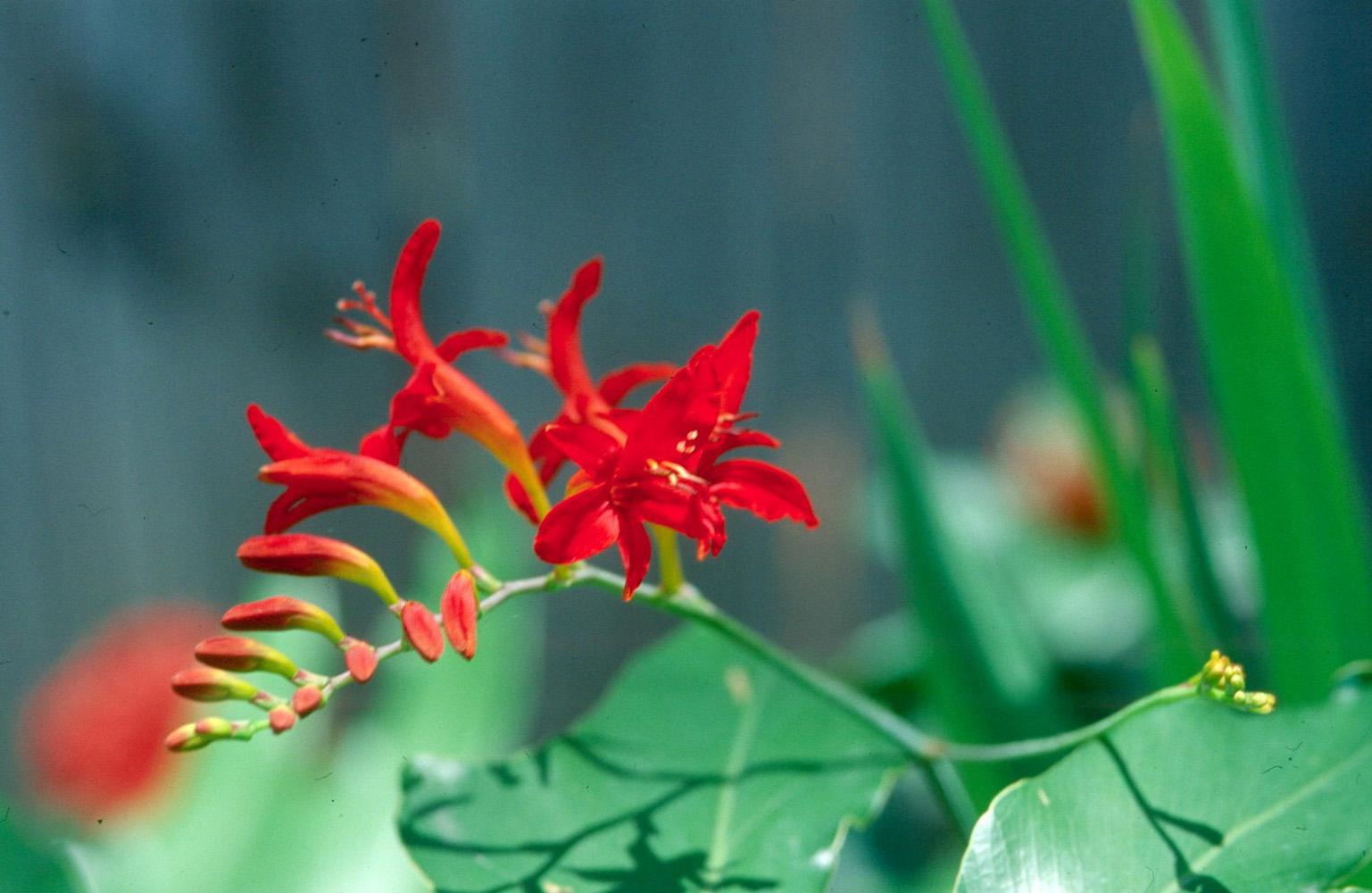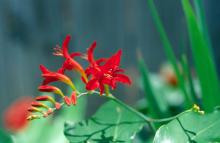Information Possibly Outdated
The information presented on this page was originally released on March 11, 2002. It may not be outdated, but please search our site for more current information. If you plan to quote or reference this information in a publication, please check with the Extension specialist or author before proceeding.
Crocosmia offers tried, true beauty
By Norman Winter
MSU Horticulturist
Central Mississippi Research & Extension Center
Since many of you are shopping for summer blooming bulbs, I want to break from telling you about new plants to remind you of one that is old and wonderful - the crocosmia, or monbretia.
Botanically speaking, it is known as Crocosmia x crocosmiiflora and is related to the gladiola. Its name comes from the Greek words "krokos" meaning saffron and "osme" meaning smell, referring to the saffron aroma the dried flowers give off when immersed in water.
This plant is native to South Africa and is an old-time favorite in the southern United States. When I lived in an old house built at the turn of the century in Mount Olive, this was one of the delights that popped up in several places. Despite its heirloom status, it is fairly easy to find in nurseries with choices in color.
The flowers are borne on stems 15- to 24-inches long and bloom for a really long period of time. Typically, the flower stems branch and curve slightly, baring two rows of buds. You can tell they are related to the gladiola.
There are choices in reds, yellows and oranges and two-tones. One of the easiest varieties to find is called Lucifer. It's not really a devil of a plant but gets its name because of its fiery red color. An old variety, Emily McKenzie, has orange flowers and a red throat. If you like bi-colored selections, look also for the orange and yellow Bressingham Beacon or the red and yellow Venus.
These plants are perfect for the tropical garden. I have had some crocosmia intermingled with tall monkey grass, or liriope. But my favorite is to have them planted among banana trees. While the banana stalks or trunks are neat as accents, the added flowers of the crocosmia make a unique display at the base. The dappled shade provided by the banana leaves seems ideal.
One of the prettiest displays that I have seen took a lot of courage to try and the gardeners probably should be given some sort of award. The combination planting had orange and red crocosmia combined with the bright blue of the Lily of the Nile.
Most of my friends who grow crocosmia think of it for the perennial- or cottage-garden look combined with daylilies or salvias. The yellow types of crocosmia combine well with purple coneflowers.
While most of us think of spot planting the crocosmia, I have also seen bold plantings in large drifts that were very attractive. You will want to plant at least a dozen for this type of display.
Crocosmias are also great as cut flowers used with grasses, zinnias or gingers. Condition them with warm 100-degree water before placing in the vase. Another oddity about this plant is that cut-flower marketers sell the crocosmia not only as a cut flower but also sell it loaded with bright green seedpods that are very effective in the vase.
Most of us never think about using the crocosmia in a container because it thrives so well in the landscape. Since it is easy to multiply, it makes sense to use it as a vertical element in large containers. Don't forget most are cold hardy to 5 degrees.
It's not always what is new that makes the garden, but sometimes it's new uses for good heirlooms. Try some crocosmia this year; you will get hooked.



